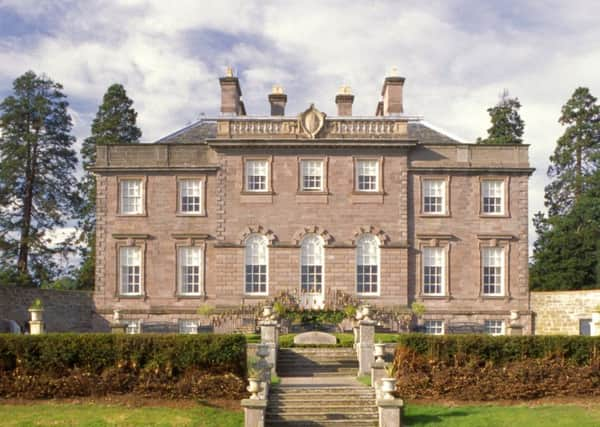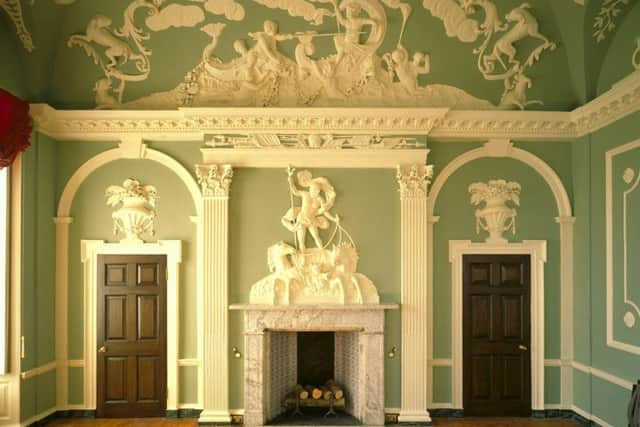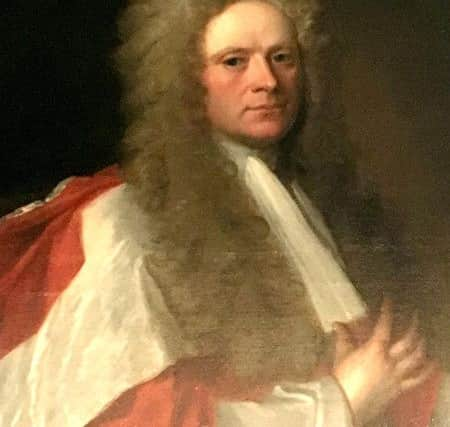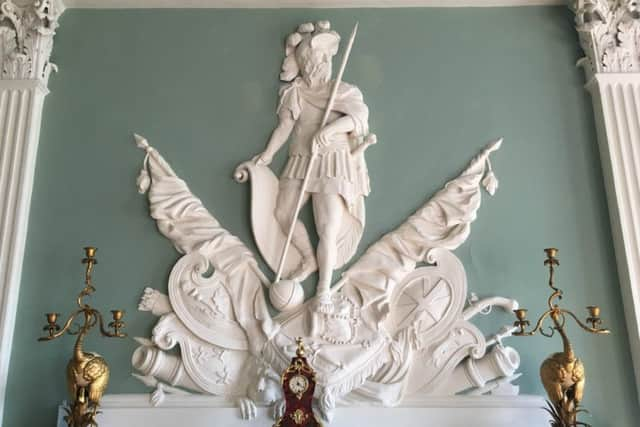The secret symbols of an underground Jacobite


David Erskine, later titled Lord Dun, was a Court of Session judge and a parliamentary commissioner who built his reputation and wealth through the Hanoverian regime.
His portrait shows him draped in vast scarlet robes, proud and serious, but belies the fact that Erskine was a Jacobite sympathiser hidden in plain site from the very regime he wished to overthrow.


Advertisement
Hide AdAdvertisement
Hide Ad“Here is a man literally operating under the nose of the Hanoverian government when his true loyalties lie with the original successor to the throne of Scotland, Bonnie Prince Charlie,” said John McKenna, of the National Trust for Scotland.
It was at Lord Dun’s country home, House of Dun near Montrose, where the only expression of his true political leanings lie.
With any admission of his Jacobite support almost certainly to lead to death, Lord Dun instead had his sympathies woven into the fabric of his retreat.


As a result, the drawing room at the Georgian Palladian mansion, designed by Robert Adam for the law lord, bears an elaborate series of plaster work that is riddled with cunning double speak over his allegiances.
The interpretation of the sumptuous displays was designed to shift depending on who may have been in the room with the judge.
Mr McKenna, property manager at House of Dun, said: “When the house was built, the instruction to Adam was to build this pleasant room where he could entertain his guests.
“All around this room, Erskine is making a statement about his wealth.


Advertisement
Hide AdAdvertisement
Hide Ad“But it is also making a statement, depending on who is sitting in the room, on his political loyalties, The little nuances are there.”
The white roses along the rear of the drawing room are perhaps the most obvious Jacobite symbol - but one that can be “explained away” given the room’ stunning views over the property’s formal gardens and rose beds.
The symbols become increasingly subtle but are loaded with meaning for any Jacobite supporter, Mr McKenna added.
Lord Dun’s Jacobite sympathies are likely to have been influenced by his distant cousin. Earl of Mar, who declared the son of deposed James II and VII as King of Scotland after he gathered a hunting party of around 800 men in Glen Quoich near Braemar.


Hunting was subsequently banned to prevent gatherings of men - with the so called ‘sport of kings’ depicted on the walls of the drawing room.
Mc McKenna said: “This hunting scene is simply a cock-a-snook to the establishment. A Jacobite would spot this right away.
“But Erskine could stand here in all innocence and claim ‘it’s only a hunting scene’.”
Advertisement
Hide AdAdvertisement
Hide AdWith the Earl of Mar having a close bearing on the design of the House of Dun, Poseiden is also depicted on his sea chariot with a water nymph heralding his arrival - or perhaps the arrival of Charles Edward Stuart from across the water.
The impressive relief of Mars, God of War, in the drawing room also has a carries a convincing double meaning that can quickly alter.
“Mars here is either a Jacobite influence or a Hanoverian one, depending on which side of the fence you sit on,” Mr McKenna said.


He added: “You are entertaining your Hanoverian friends and here you can see the Union Flag and Mars suppressing the Scottish Crown and the Lion of Scotland.
“Then, you entertain your Jacobite friends and the opposite comes to light. You have the Crown of England and the Lion of England being suppressed.
“Look closer again and you can see the Fleur de Lys, representing France, and then you have a thistle with a Crown on the top of it.
“The Jacobite influence may well win here.”
Images of the Fleur de Lys and the Lion Rampant also emerge in a further relief featuring Minerva, Goddess of Wisdom and War, who is pointing at the Sun King, Louis XIV.
Advertisement
Hide AdAdvertisement
Hide Ad“You can take it any way you want. You can push it towards and innocent scene if necessary, but their meanings can also be told in a different way,” Mr McKenna added.
To the untrained eye, the messages may at first appear hard to read but Mr McKenna is in no doubt of their intention.
So clear, infact, that Mr McKenna is surprised how Erskine came away unscathed during the 1745 uprising and its aftermath.
He added: “It is well documented that Angus was a hot bed of Jacobite sympathisers and Erskine was up to his neck in it.
“I don’t know why the Hanoverians didn’t pick this up.”
“Erskine was a very intelligent man - he was a MP, he was a judge in the Court of Session, so he knew how to play the game.
“If he was found out, he would have been swinging from a rope at the bottom of the Gallow’s Knowll that sits down the bottom of his drive.”
“But he managed to survive it and he lived to his old age. “
Advertisement
Hide AdAdvertisement
Hide AdThe Jacobite story has no shortage of double-dealings and spies with Mr McKenna describing an “ vast underground Jacobite following” in Scotland.
He added: “You saw covert resistance in France during WWII and I don’t think it was a million miles away from that.
“There was this whole community, this covert community that was active in Scotland. In particular in Angus.
“But Erskine had made a very nice life for himself from the Hanoverian regime.
“He was not going to go out of his way to bite the hand that was feeding him.”
House of Dun is included in the new Bonnie Prince Charlie and the Jacobites Trail which features 26 properties linked to the Jacobite story.
For more information and for your chance to WIN a six-night Jacobite Journey in Scotland, go to www.jacobitetrail.co.uk/win.
